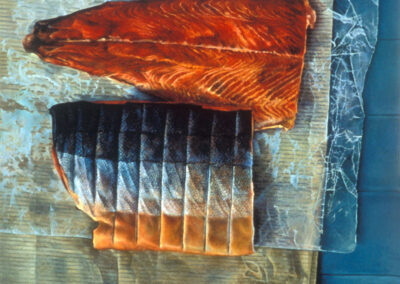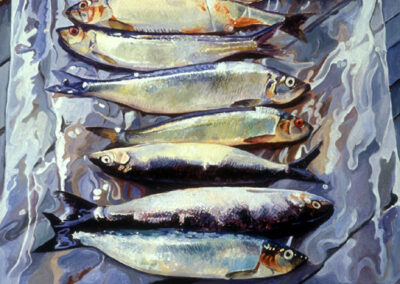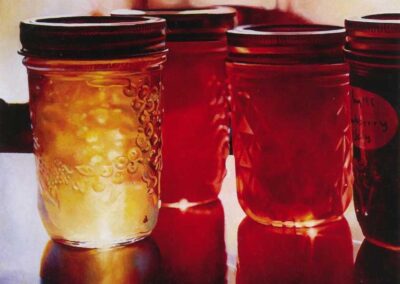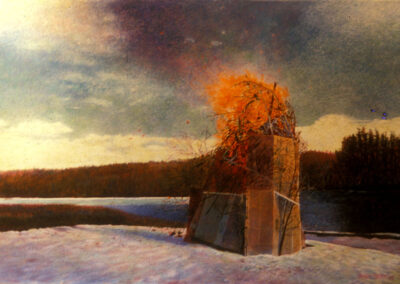Our next Artist You Need To Know is someone who, in response to a dismissal of her works as ‘too commercial’, responded with “People will find out that in each one of the paintings there is something that ought to disturb them, something upsetting. That is why I painted them.”
Dr. Mary Pratt (1935 – 2018) is best known for her photo realistic still life paintings, though she also produced many paintings that explored domestic scenes and her later works had a darker, subversive tone, especially in several of her portraits. Pratt often described her paintings in terms of “conveying the sensuality of light.”
-

Split Grisle, 1979
-

Trout in a Bucket, 1974
-

Eviscerated Chicken, 1979
-

Arctic Char, 1979
-

Silver Fish on Crimson Foil, 1987
-

Herring on a Salt Bag, 1979
Domestic life in rural Newfoundland, and the every day objects of her world were the subjects that she transformed through paint from something mundane into aesthetically riveting works that led Gerta Moray to claim that “she may have had more influence on shaping the way we see things than any Canadian painter since the Group of Seven.” Jars of jelly, apples, aluminum foil, brown paper bags or a fish being prepared for dinner were all rendered in a bold and almost flamboyant manner, with a vivid realism. Pratt’s words: “..certainly I would never paint anything that didn’t strike me emotionally, something that didn’t physically bother me.”
Her first major exhibition was at Memorial University of Newfoundland, but touring exhibitions of Pratt’s artwork have been hosted by Museum London, The Robert McLaughlin Gallery, Beaverbrook Art Gallery, McMichael Canadian Art Collection, Art Gallery of Windsor, The Rooms and the Art Gallery of Nova Scotia.
Her work is collected both nationally and internationally by museums, corporate, and private collectors including the AGO – Art Gallery of Ontario; the Beaverbrook Art Gallery; Canada House, London, England; National Gallery of Canada; the Vancouver Art Gallery; and the RBC Financial Group. In 2007, Canada Post issued a stamp with the image of her painting Jelly Shelf. She was named a Companion of the Order of Canada (1996) and was also awarded the Molson Prize for visual artists from the Canada Council for the Arts (1997).











